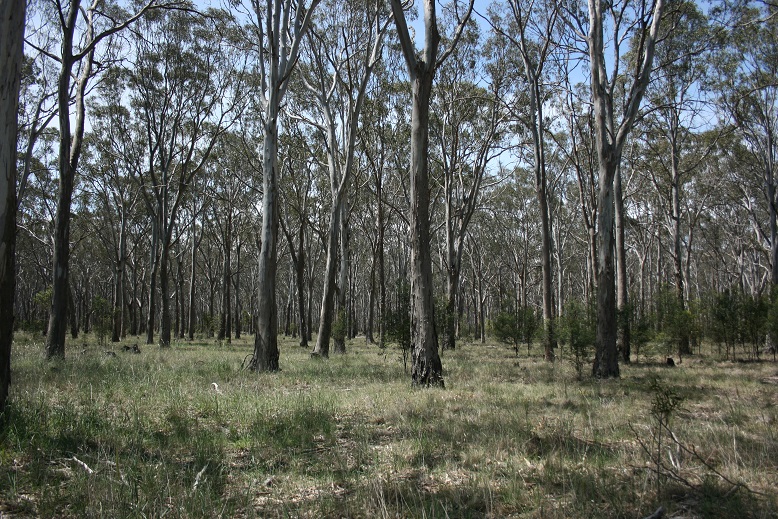
Forest Red Gum
Eucalyptus tereticornis subsp. mediana
Grey patchy bark with patches of other colours and shed in flakes leaving bare smooth areas. Adult leaves similar to River Red Gum E. camaldulensis and vary in length from 9-20 cm and are often pale and greyish-green in colour. Juvenile leaves are green and broader than the adult.
| Details | |
|---|---|
| Flora Type | Trees |
| Distinctive Features | Five to twelve buds per cluster with elongated conical cap. |
| Biology | Perennial. A species of open plains country on moist alluvial soils, often with a clay subsoil. |
| Native Status | Native |
| Taxonomy | |
|---|---|
| Phylum | Tracheophyta (Vascular Plants) |
| Class | Magnoliopsida (Flowering Plants) |
| Order | Myrtales |
| Family | Myrtaceae |
| Genus | Eucalyptus |
| Species | tereticornis |
Important species for Aboriginal people in NSW. The fresh gum was mixed with warm water and applied to sores, burns and scabies. The bark was used for the making of implements and weapons, and to make ceremonial charcoal. The bark exudate was used to relieve toothache pain. Blossoms eaten by Grey Headed Flying Fox and is a major food source for Koalas. Habitat Tree for cockatoos.
| Interesting Facts | |
|---|---|
| Similar Species | Closely related to E. camaldulensis but distinguished by buds which are elongated and conical. |
| Native Status | Native |